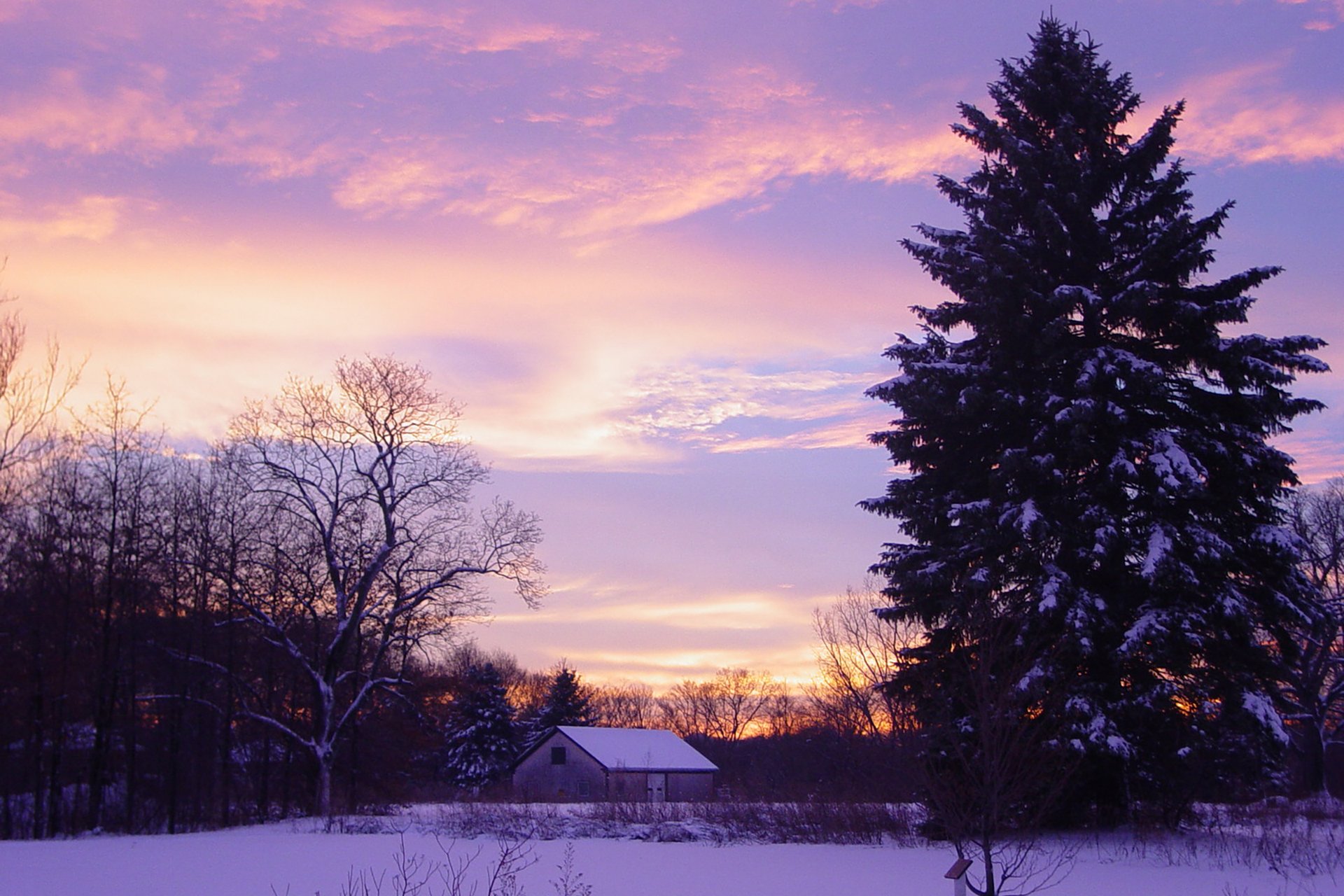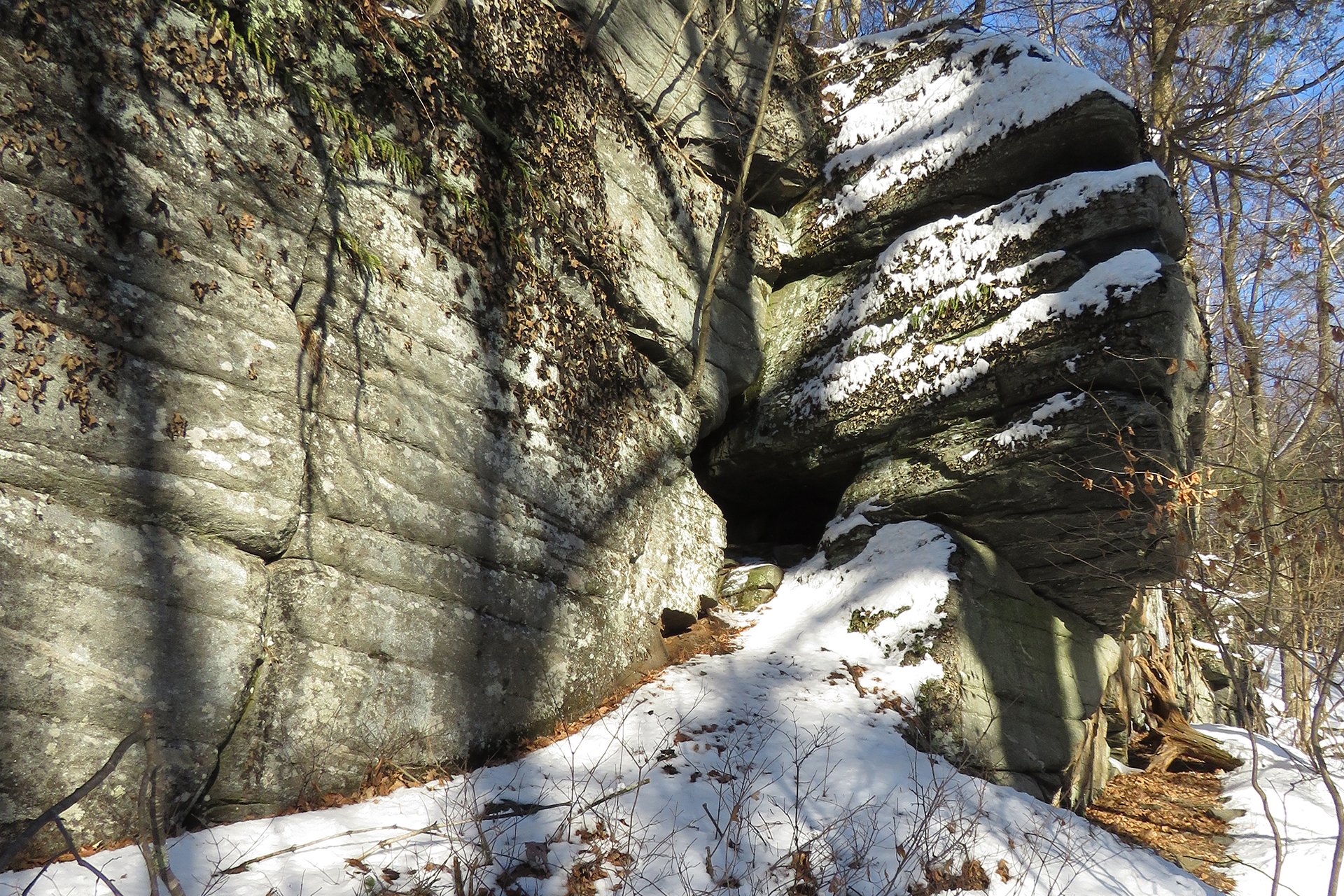Nature Through a Winter Lens
December 01, 2022
The crisp crunch of snow beneath your feet, the whistling wind echoing through bare trees, the fragile ice crystals creeping out from the banks of a not quite frozen stream— wintertime is full of sights and sounds that can’t be found any other time of year.
Need a little inspiration? Bundle up, pack your bag, and head out to one of Mass Audubon’s wildlife sanctuaries to find your perfect wonderland to explore with unique views and winter specialties.
A Wave of Winter
People come to the coasts in summertime to enjoy the sun’s warm rays, take in the gentle crash of waves, and admire the breeding coastal waterbirds. Although the sand is a little chillier, and the dunes maybe even covered in snowcaps, winter beaches give you a chance to admire different wildlife species and ocean lookouts. Walk along the half-mile rocky shore on the Beach Loop Trail at Allens Pond in South Dartmouth and Westport to watch the tides roll in at Buzzards Bay. If you’re lucky, you might even catch a glimpse of a Snowy Owl or winter ducks.
Travel to the North Shore and you can look at the coastal seascape, anchored boats, and a classic New England lighthouse without even leaving your car at Eastern Point in Gloucester.
Snowy Sunsets
Without the foliage of trees, you can have a clearer visibility of the purples, pinks, and blues that paint the sky during a winter sunset. After a snowfall, walk along the Rabbit Trail at Boston Nature Center in Mattapan to see the sunset hues reflecting off the boardwalk and a fresh coat of snow.
Climb Old Baldy in Otis, which peaks at an elevation of 1,969 feet. At the top, enjoy a 360-degree panoramic view of the hilly landscape and Sugar Maple, White Ash, and Red Oak forests below. After capturing a couple of photos, navigate the 0.3-mile trail down the slope.
For a 180-degree sunset with snowy fields and woodlands in the backdrop, you’ll want to hike at Broadmoor in Natick along the Glacial Hill Trail from Signpost 12; then take a right on an offshoot trail that brings you to a bench outlook over the old orchard.
Signs of Life
Even in cold temperatures, you can still find signs of wildlife foraging, resting, and playing. Blue Hills Trailside Museum in Milton has year-round outdoor exhibits with non-releasable wildlife to observe up close, such as a river otter and a red fox.
Out in the wild, try to spot a porcupine on the Porcupine Ledge Loop at Rutland Brook in Petersham, a bobcat on the Old Coach Road Trail at Arcadia in Easthampton and Northampton, and brants on the Boardwalk Trail at Wellfleet Bay in South Wellfleet. Even if you don’t see any wildlife, you will most likely see plenty of tracks. To observe river otter track and slides, walk on the Marsh Trail and the Old Farm Road at Felix Neck in Edgartown after a snowfall.
Sweet as Maple Sugar
Did you know that it takes an average of 40 to 50 gallons of Sugar Maple sap to produce one gallon of maple syrup? Mass Audubon has six wildlife sanctuaries that offer maple sugaring programs and demonstrations to see the transformation of sap to syrup in real time. You can also just stop and listen to sap dripping into buckets throughout the sugar groves—it sounds like a distant tin band playing—or see sap freezing on a tree during a cold spell.
Look for these trees hard at work on the Bunker Meadow Trail near the Observation Tower at Ipswich River in Topsfield. For the last 45 years, they have been producing 55 to 60 gallons of syrup each year. And head over to Moose Hill in Sharon in late winter to get a whiff of sap becoming syrup in the Maple Sugar Shack on the Billings Loop Trail.
Once you’ve checked out these winter adventures, find more at our other wildlife sanctuaries. Discover your next adventure at massaudubon.org/sanctuaries.
Winter Safety
Whether you decide to hunt for porcupine tracks, listen to the icy waves crash the shore, or engage in any other winter activity, you must do it safely. To save a shiver from going up your spine and to ensure you stay safe while outdoors, make sure you are properly dressed and have the right gear. Check out some of the preparations you should consider before stepping out.
✔ Avoid falling on slippery trails by adding microspikes or crampons to your insulated boots. These handy tools are typically rubber soles that fit around your boot and have metal components underneath that provide traction on icy trails.
✔ Always pack plenty of snacks to load up on energy, bring first aid kits in case of a slip, and keep a virtual or physical trail map handy.
✔ Skip water bottles with long straws or Camelbacks; they have a higher tendency to freeze, especially when stored on the outside of your backpack. An insulated water bottle is ideal, but normal water bottles wrapped in insulated sleeves and stored in the center of your bag should be fine in temperatures above zero degrees.
✔ Days are shorter in this season, so always bring a flashlight or a headlamp.
✔ Keep your cell phone and any other battery-operated device in a warm place as cold temperatures can quickly drain the battery.
✔ Even with shorter daylight hours, there still can be lots of sun, so wear sunblock on a day where you have a lot of exposure.
✔ Take a moment to appreciate all the beauty of our landscape, but don’t stay in one place too long. Keep your body moving and producing heat before your body succumbs to the external temperature.
This story was featured in the Winter 2023 issue of Explore, Mass Audubon's member newsletter.
Stay Connected
Don't miss a beat on all the ways you can get outdoors, celebrate nature, and get involved.




